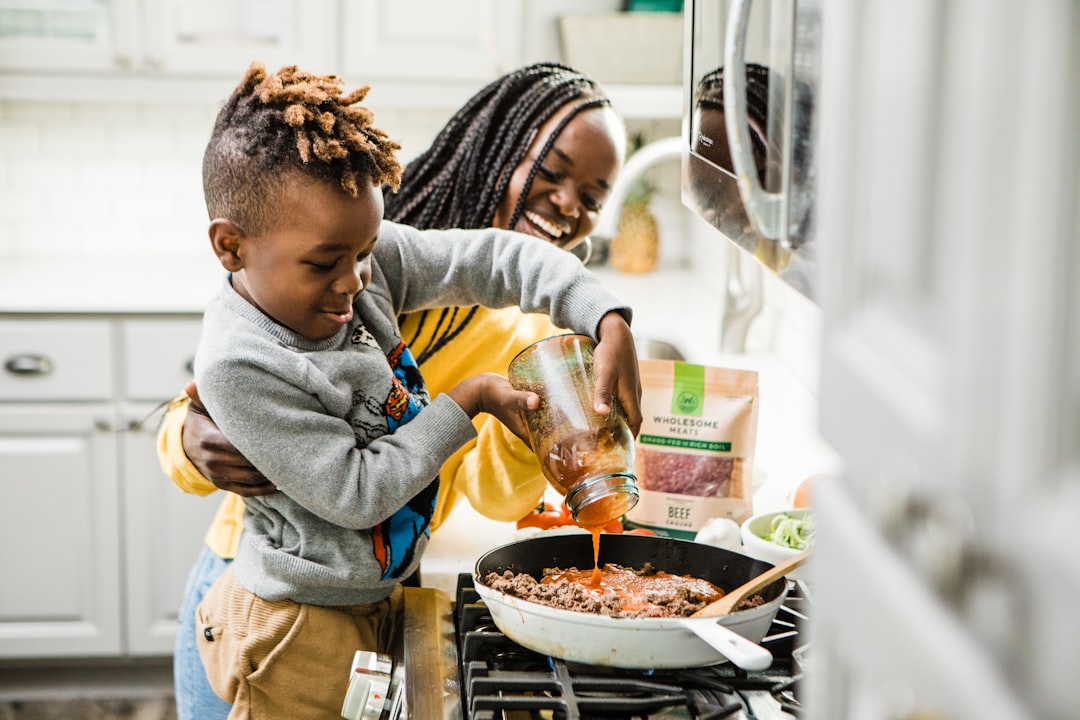Food For Thought: Explain It Like I'm Five
How a Nobel Prize winning physicist can help you to pass on family recipes

The Internet has some pretty dark corners. While most people know that the dark web and places like 4chan are cesspools of the worst of humanity, even popular apps like Tik Tok have sinister implications. It’s enough to make anyone, and particularly parents, worried for the future of not only our attention spans but our very souls.
But there are some gems out there if you know where to look, and one of my favourites has long been Reddit, the long-time social news aggregator and discussion board. While not without its shady alleyways and controversies, it is home to many entertaining and diverting “subreddits”, discussion boards where users post questions and commenters respond, “upvoting” the best answers and commentary on any number of topics.
One of my favourite subreddits (aside from the delightfully bitchy AITA), is ELI5, aka Explain It Like I’m Five, where people pose questions and commenters are invited to explain their answers in the simplest possible language. It’s a great place to get a basic explanation of a scientific concept or otherwise impenetrable topics like blockchain or crypto.
A recent perusal of ELI5 recalled to mind the Feynman Technique, one of (in my mind) the best tools for teaching and sharing information, particularly on complicated topics.
For the uninitiated, the Feynman Technique is named after Richard Feynman, a Nobel Prize winning physicist known for his ability to explain the most complicated concepts in a way that the average person could understand. The technique is beautiful in its simplicity:
Decide what you want to study and write down everything you know on the topic.
Teach the topic to someone, preferably someone who knows nothing about it. Even better if you are explaining it to a child.
Make note of the questions they ask, the things they are unclear about, and what they reveal about the gaps in your own knowledge. Go back and study to fill in the gaps. Don't lean on jargon - explain it.
Refine and simplify your explanation until it is in the clearest possible terms that even a child can understand.
Essentially, explain it like I’m five.
Many good teachers have told me that teaching a topic often reveals gaps in their understanding and helps to both expand and distill their knowledge. Even without deliberate application of the technique the principle holds - teaching is one of the best ways to learn.
In many restaurant kitchens, and particularly in the better ones, a great deal of time is spent on learning and teaching. Chefs and cooks come from a wide variety of backgrounds and experiences. You will often find culinary school graduates working next to people who have worked their way up from washing dishes, or people who have dropped out of high school supervising university graduates.
It’s one of the best parts of the culinary business. Diversity is the stage for creativity and the dishes that end up on your plate are the result of chefs teaching each other about technique and ingredients.
But as we ease into the season of the many solstice-adjacent holidays, we too find ourselves working together in our kitchens. We’re baking cookies, making elaborate dinners, and assembling platters and boards for entertaining, all with family and friends filling the roles of our kitchen brigade - sous chef, prep cook, pot washer.
So why not use some of this time to teach and share the family recipes that make the holidays so special?
The Feynman Technique is a great way to share your family recipes because it adapts easily to all skill levels. By encouraging you to break down steps and explanations to their simplest forms, the technique allows you share with everyone, young or old, novice or experienced cook.
Decide the recipe you want to share. What are the defining dishes of your holiday? Grandma’s stuffing or the Christmas cake? That very particular way of making mashed potatoes?
Explain yourself. If you tell people you are trying a teaching/learning technique they might give you a pass for “Explaining like I’m Five”. Some more experienced cooks get huffy if you come across too pedantic, but will cheerfully join in if you explain your reasoning.
Take notes. Don’t assume that you’ll remember the details or the feedback. Write down the steps and the likely questions (even in rough form) and refer to it during your explanations. Make notes of the questions you get asked and cross-reference - these are key to the gaps in your understanding.
Write the definitive guide. Grandma’s scratchy old recipe cards are wonderful heirlooms, but they make many assumptions beyond the knowledge and comprehension of most modern cooks. Take photos of the steps (we’re all visual learners in the kitchen) and find yourself a great recipe template. So what if it takes three pages of explanation on how to stuff and roast a turkey? If it’s easy to understand it’s worth every word.
Share widely. Now that there’s a well-written recipe make sure everyone in the family gets a copy. There are endless ways to share - email, Whats App, the family Slack. Even good old paper copies can be shared at family events or in the mail.
And while preserving family recipes is important to our social and cultural legacy there’s a special benefit for those of us doing the sharing: many hands make lighter work. So when you gather with family in the coming weeks, make teaching, sharing, and reminiscing about your favourite recipes part of the fun - you might even have a more relaxing holiday and become a better cook too.

